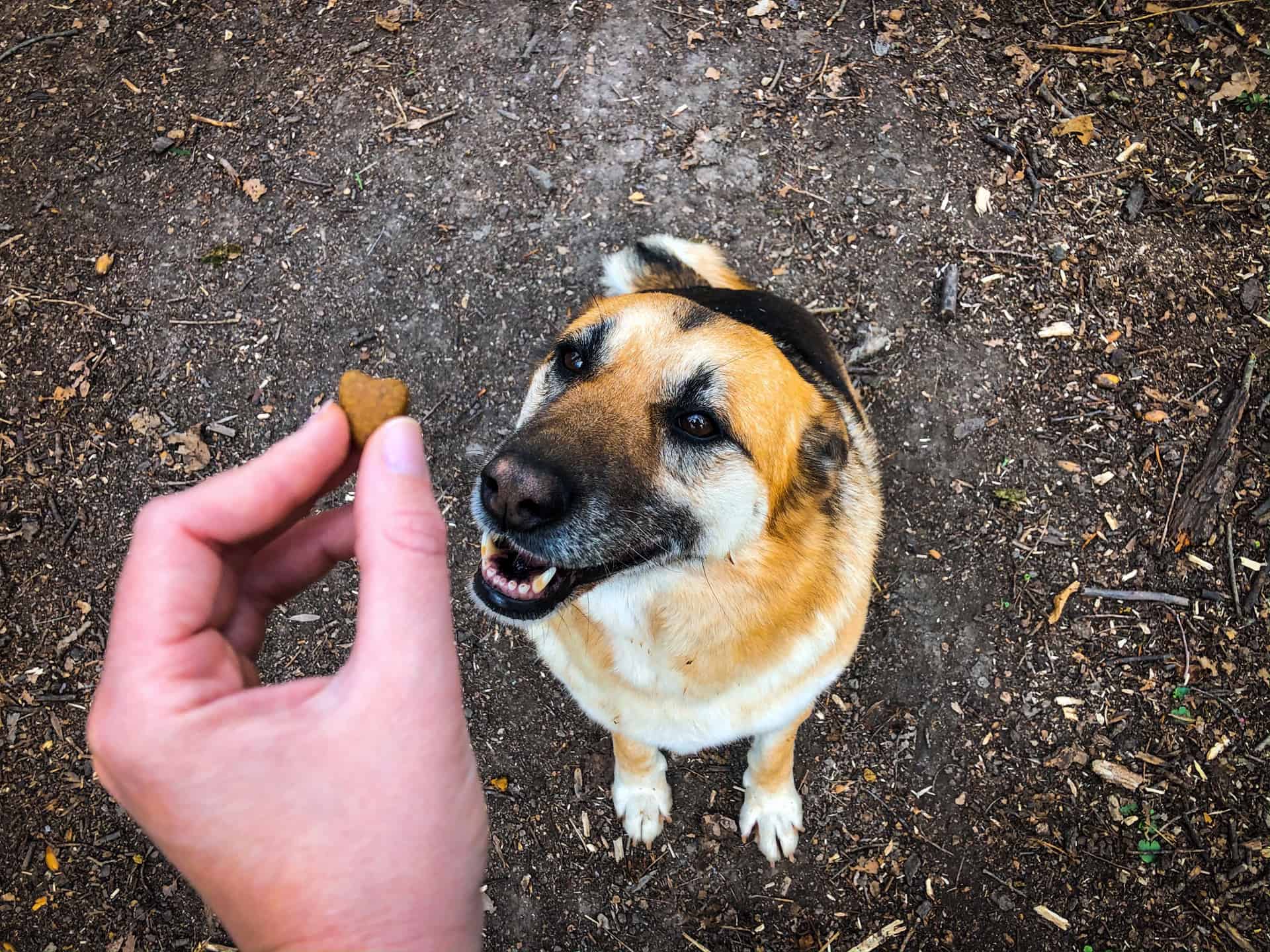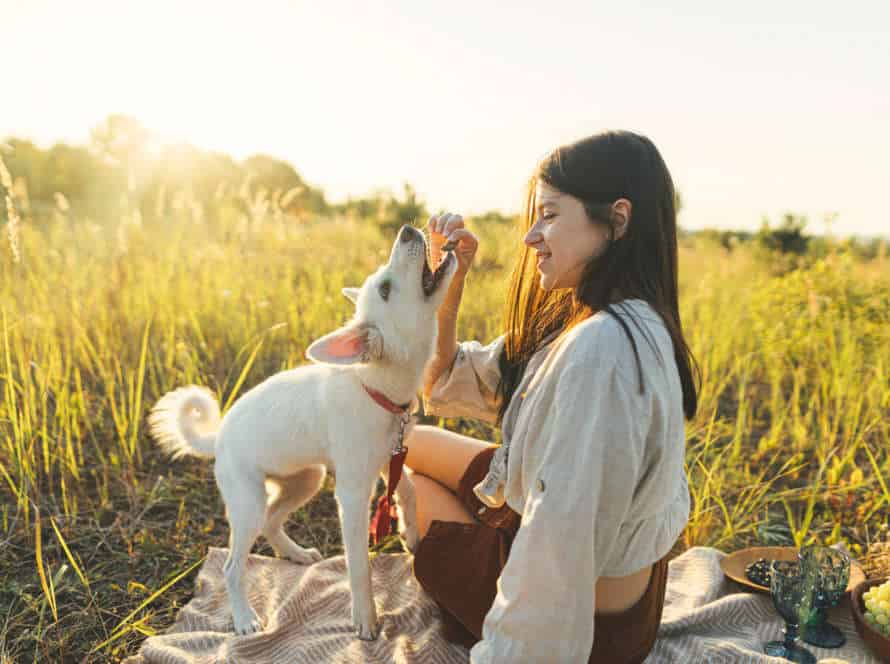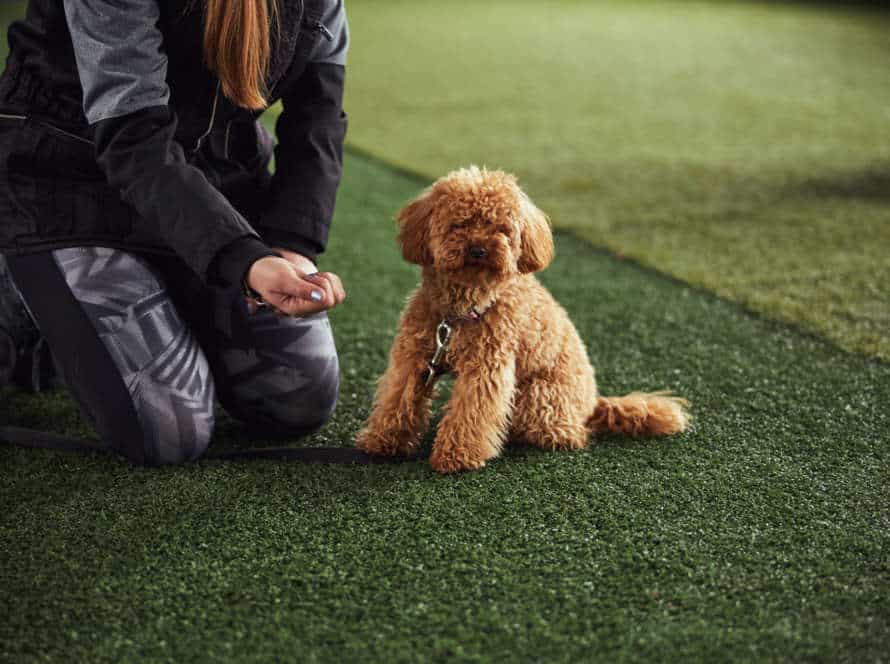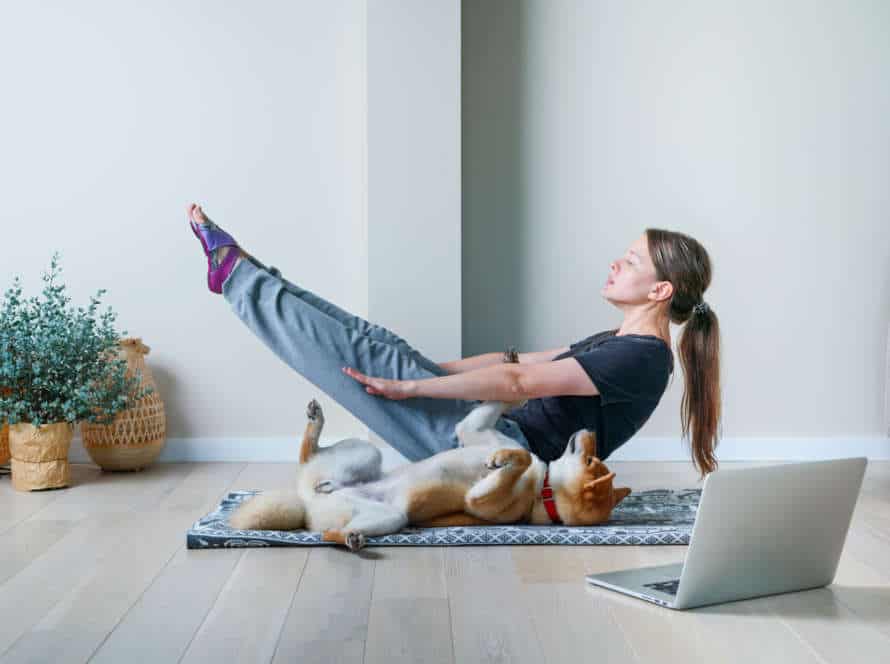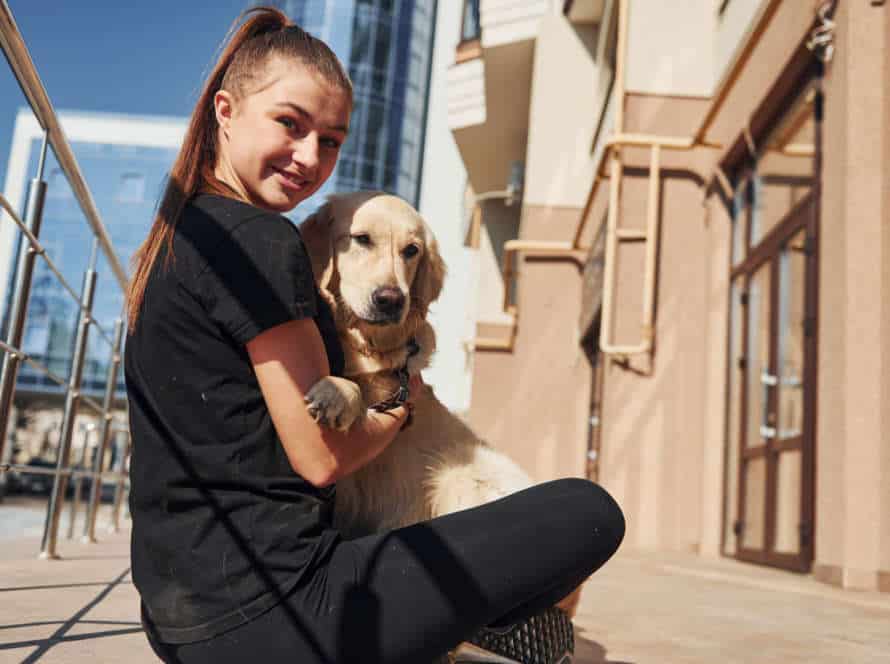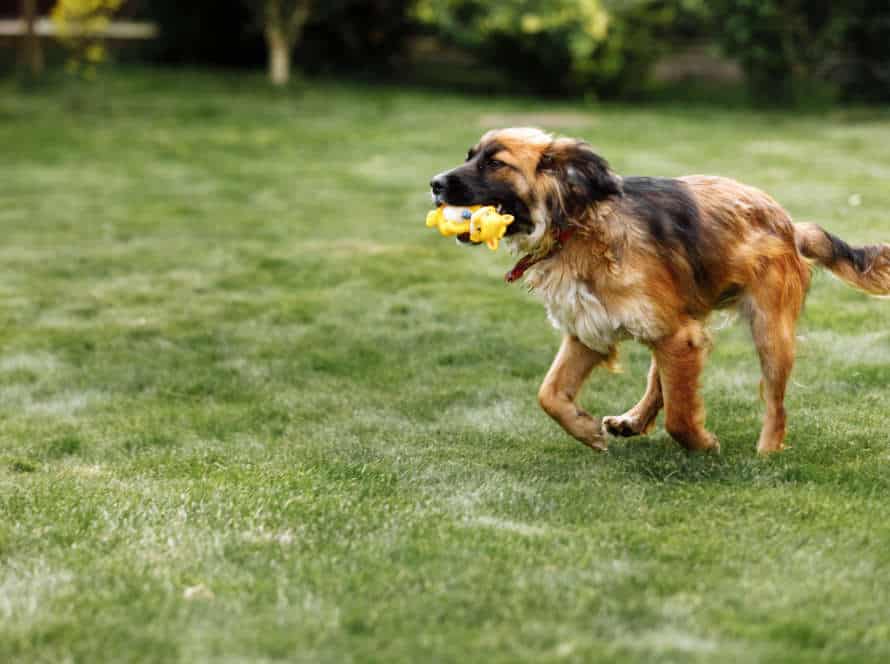The Benefits of Positive Reinforcement for Senior Dogs
Positive reinforcement is a great technique to help older dogs act better. Praise and reward them when they show good behaviors. This creates a secure environment and encourages more positive actions. Let’s check out the advantages of positive reinforcement for elderly pups!
Why positive reinforcement is an effective training method for senior dogs
Positive reinforcement is great for senior pooches. As they get older, traditional training may not be as effective. Here are the benefits of positive reinforcement for older dogs:
- Builds trust – Owners and senior pups can create a bond of trust and respect.
- Easy on joints – Positive reinforcement is usually gentle, which is great for oldies with joint or mobility issues.
- Motivating – Senior dogs like rewards and encouragement more than punishment.
- Mental stimulation – Positive reinforcement helps keep minds active, reducing cognitive decline and making them happier.
Remember, senior dogs need patience and kindness when using positive reinforcement.
The science behind positive reinforcement and its impact on senior dogs’ behavior
Positive reinforcement is scientifically proven to modify and improve the behavior of senior dogs. It works by rewarding them when desirable behavior is exhibited – like following commands or displaying good manners. Rewards can be treats, verbal praise, toys or physical affection.
The benefits of using positive reinforcement for senior dogs are immense. It helps their mental and emotional well-being, builds a trusting relationship between the dog and its owner, and creates an environment that makes them feel secure and supported.
Positive reinforcement is an effective way to encourage good behavior in senior dogs. Be patient and consistent when training. And don’t forget – positive reinforcement isn’t just for dogs! Try it in your daily routine to motivate and improve your own behavior.
How positive reinforcement can improve a senior dog’s quality of life
Positive reinforcement can really improve the lives of senior dogs. Here’s how:
- Mental Stimulation: Teaching new tricks and behaviors keeps their minds active.
- Physical Health: Exercise strengthens joints and muscles, even for those with mobility issues.
- Emotional Wellbeing: Builds self-esteem and confidence, helping to reduce anxiety and depression.
Positive reinforcement is a great way to make senior dogs happier and healthier. New tricks and words of encouragement will help them live their golden years to the fullest.
Choosing the Right Positive Reinforcement Techniques for Senior Dogs
Positive reinforcement is a strong tool to support great behaviour in dogs of any age. For senior pooches, though, they may need different types of reinforcement than the younger ones. We’ll look into the different methods and resources to use when working with senior dogs and positive reinforcement.
Tailoring training methods to a senior dog’s individual needs
Training senior dogs? Essential for success is tailoring methods to their individual needs. Positive reinforcement is gentle + rewarding. Here’s tips for choosing the right techs:
- Basic obedience commands (sit, stay, come);
- High-value rewards (e.g. chicken/cheese);
- Consider any physical limitations/health issues;
- Be patient + consistent;
- Avoid overworking;
- Remember they can learn new tricks but may take longer + need more frequent breaks.
Pro tip: mental stimulation (puzzle toys/scent games) to keep their minds sharp + engaged.
Using positive reinforcement to address common senior dog issues
Positive reinforcement can be a great way to help senior dogs with common issues. But, it is important to pick the right techniques. Here are some suitable ones:
- Give treats as rewards when your senior dog does something good or follows instructions. Be careful with portion size, as senior dogs often have dietary restrictions.
- Use verbal cues, petting, and words like “good boy/girl” to reward good behaviour and create a positive environment.
- Clicker training is popular – make a click noise when your senior dog does something right and give a treat afterwards.
- Environmental enrichment, like toys, puzzles, and games, helps to stimulate them mentally and reduce anxiety.
Remember: Check with a veterinarian or professional dog trainer before starting any positive reinforcement with your senior dog.
Implementing positive reinforcement training in a low-stress way for senior dogs
Positive reinforcement training is great for senior dogs! It’s low-stress and can make their golden years more comfortable. To get the best results, choose commands that are easy to execute. Treats like boiled chicken or cheese can be used as rewards. Avoid activities that put strain on them, like jumping or running. Speak in a calm and positive tone, and give them plenty of breaks. Combine the training with regular exercise, socializing, and vet visits.
Pro Tip: Senior dogs may not have lots of energy or mobility. So be patient and reward small successes to keep them motivated.
Positive Reinforcement Training Activities for Senior Dogs
Positive reinforcement training is an efficient way to aid aging pups in learning new behaviors and sustaining their current ones. It can help senior dogs stay active and keep their minds sharp. Plus, it helps them bond with their owners, promoting both psychological and physical well-being.
Here, we’ll discuss activities that are particularly successful for senior dogs.
Targeted exercises to improve physical and cognitive ability in senior dogs
Exercises that are targeted can help improve physical and cognitive abilities of senior dogs. Training activities with positive reinforcement can be great for their minds and bodies, and maintain their overall health.
Here are a few targeted exercises:
- Nose work – Hide treats or favourite toys in boxes or around the house and let your dog use their sense of smell to find it.
- Tug of War – A gentle game of tug-of-war can strengthen their jaws and improve grip.
- Balance work – Let your dog stand on unstable surfaces like wobble board or cushions to improve balance and stability.
- Puzzle toys – Stimulate their mental ability with puzzle toys that need them to move levers, press buttons or slide doors to access treats.
- Swimming – Swimming is a low-impact option to strengthen muscles without putting stress on their joints.
Remember to keep sessions short, and provide positive reinforcement rewards. Only do exercises suitable for your dog’s physical abilities.
Pro tip: Consult a veterinarian before starting new exercise routines with your senior dog.
Fun and interactive training games to keep senior dogs mentally stimulated
As our pups get older, it’s crucial to find ways to keep them mentally engaged. Fun and interactive training games can help to promote positive reinforcement and keep senior dogs sharp. Here are some activities you can do:
- Treasure hunt: Hide treats around the house or yard and encourage your senior pup to use their sense of smell to find them.
- Food puzzles: Invest in food puzzles or make your own by hiding treats in boxes with lids that your pup needs to open.
- Name recognition: Teach your senior pup their toy’s names and practice playing “fetch” where you ask them to bring a specific toy by name.
- Trick training: Teach your senior pup new tricks like “roll over,” “high five,” or “shake.”
These activities not only stimulate them, but also strengthen the bond between you and your beloved pet.
How to use positive reinforcement to teach an old dog new tricks
Positive reinforcement is a great training technique for older doggos. Rewards like treats, praise, or playtime, will keep them engaged and motivated to learn.
Here are some activities:
- Basic Commands: Teach ‘sit’, ‘stay’, and ‘come’. Reward successful execution with treats.
- New Tricks: Teach ‘roll over’ and ‘shake’. Praise with words and physical affection.
- Puzzle Toys: Use toys that reward with treats – to keep their mind active.
- Playtime: Use playtime to reward – like teaching fetch. Praise with words and affection.
With positive reinforcement, seniors can learn new skills and be healthier and happier. Pro Tip: Keep training sessions short and regular – to stop your pup from feeling overwhelmed.
Best Practices for Positive Reinforcement Training with Senior Dogs
Positive reinforcement is the top way to train a pup – even senior dogs! Just reward your pup with treats, praises and other goodies when they do something you want. This creates an atmosphere of trust which helps them learn faster. Here, let’s look at the best practices for positive reinforcement when training senior dogs.
Understanding the limitations of senior dogs and modifying training accordingly
Successful training starts with knowing the physical and mental limits of older dogs. Positive reinforcement is perfect for senior pooches as it lowers tension and increases their self-esteem. Here are some tips to have in mind while training them:
- Pick activities that are suitable for their age and strength.
- Divide the training into shorter and more frequent sessions to prevent exhaustion and annoyance.
- Reward good behavior with treats and compliments.
- Don’t use physical force or punishment which can be damaging.
- Show patience and flexibility and be ready to change your training plans if needed.
- Remember that senior dogs can still learn and have fun with the right motivation and positive reinforcement.
The importance of consistency and patience in positive reinforcement training with senior dogs
Consistency and patience are essential for positive reinforcement training of senior dogs. This means rewarding desired behaviors rather than punishing negative ones. Here are tips to keep in mind:
- Be consistent in your approach, with a set of verbal and visual cues.
- Be patient and focus on rewarding good behavior.
- Use age-appropriate training and adjust to physical and cognitive abilities.
- Reward the senior dog with treats, affection and praise.
- End each session on a positive note to reinforce the positive associations.
Training senior dogs with positive reinforcement will strengthen the bond and improve behavior.
How to reinforce positive behaviors in senior dogs to make training stick
Training senior dogs via positive reinforcement requires a different approach than with younger pups. But, it can be done with the correct techniques. Here’s how:
- Treats: Older dogs may have a harder time chewing. So, consider treats that are soft and easy to chew, such as small pieces of cooked chicken or cheese.
- Keep it simple: Complex commands may be too difficult for senior doggos to understand. Stick with one or two words for commands.
- Patience: Training sessions should be shorter and less frequent for senior dogs. Avoid actions that could cause stress, frustration, or exhaustion.
- Consistency: Commands, behaviour, and rewards should remain consistent. This is especially vital when training senior dogs.
Positive reinforcement training can be a winning combo for older pooches if you follow these best practices!
Potential Challenges and Solutions for Positive Reinforcement Training with Senior Dogs
Positive reinforcement training is a fabulous method to create trust and understanding between a pooch and their handler. However, when training an elderly dog, there can be difficulties. In this article, we’ll check the potential issues one could experience when training an old dog with positive reinforcement, and also a few solutions for overcoming them.
Common obstacles faced when training senior dogs with positive reinforcement
Seniors dogs may face difficulties while training with positive reinforcement. Joint pain, reduced mobility and hearing or vision loss are common. Also, ingrained behavior patterns can be a challenge.
To help, try:
- Low-impact exercises and training that fits the senior dog’s abilities.
- Use hand signals to replace verbal commands for dogs with hearing problems.
- Shorten training sessions and increase frequency for a reduced attention span.
- Incorporate positive reinforcement early to prevent ingrained behaviors.
Patience and understanding is key with senior dog training.
Ways to work around age-related challenges during training
Challenges with senior dogs? No worries! Positive reinforcement techniques can help. Here are some tips:
- Mobility: Low-impact exercises & treat-dispensing puzzle toys!
- Hearing/Vision: Hand signals or clicker training.
- Bladder/Bowel control: After a potty break & short training sesh.
Training seniors? Adjust to their needs & capabilities for success!
Consultation with a veterinarian and/or professional dog trainer to create a positive reinforcement training plan for senior dogs.
Consulting with a vet and/or dog trainer is essential to build a positive training plan for older pooches. Positive reinforcement works for all ages, but senior dogs may need extra attention due to health or cognitive issues. Here are a few challenges and solutions for positive reinforcement training with senior dogs:
Challenge: Reduced mobility, vision or hearing can make it hard to learn new commands.
Solution: Modify training techniques, using visual, auditory or physical cues to help older dogs learn.
Challenge: Incontinence can make it hard to create a consistent potty routine.
Solution: Encourage senior dogs to go outside, with frequent potty breaks and positive reinforcement.
Challenge: Cognitive decline may cause them to forget previously learned behaviors.
Solution: With positive reinforcement and repetition, reinforce old behaviors and teach new ones.
Consult with a vet or professional dog trainer to make a positive reinforcement plan tailored to your senior pup. That way, they can stay happy and engaged in their golden years.
Frequently Asked Questions
Q: What is positive reinforcement for senior dogs?
A: Positive reinforcement is a training technique that involves rewarding desired behavior instead of punishing undesirable behavior. For senior dogs, this can include giving treats, praise, or toys when they perform a desired action.
Q: Can positive reinforcement work for senior dogs with bad habits?
A: Yes, positive reinforcement can be effective for senior dogs with bad habits. By rewarding desired behavior and ignoring or redirecting undesired behavior, the senior dog can learn new, positive habits.
Q: Why is positive reinforcement beneficial for senior dogs?
A: Positive reinforcement is beneficial for senior dogs because it keeps them mentally stimulated and engaged. It also builds trust and a stronger bond between the senior dog and their owner.
Q: Is positive reinforcement only for obedience training?
A: No, positive reinforcement can be used for a wide range of training activities for senior dogs, including agility, trick training, and even therapy training.
Q: Can positive reinforcement be used with other training techniques?
A: Yes, positive reinforcement can be used in conjunction with other training techniques. It can be particularly effective when combined with clicker training or shaping.
Q: What types of treats are best for positive reinforcement training with senior dogs?
A: Soft, chewy treats or small, easy-to-eat bites are typically the best options for positive reinforcement training with senior dogs. Treats should also be low-calorie and appropriate for the senior dog’s diet.

